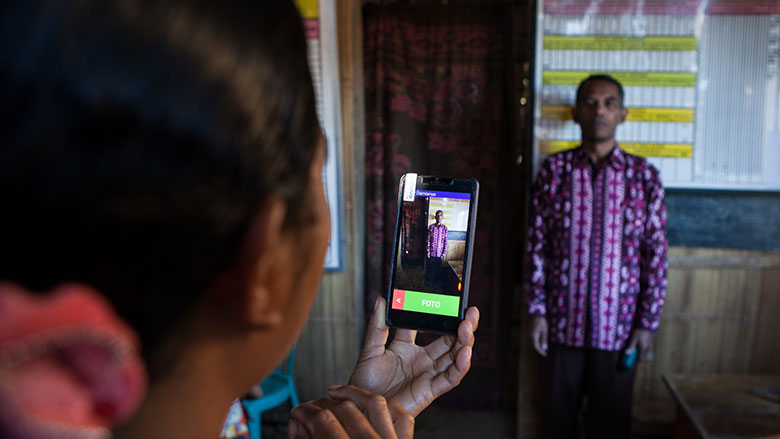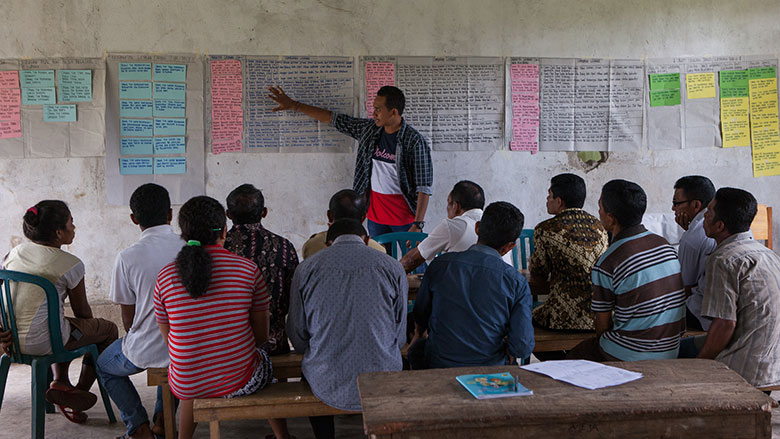Empowering community participation and tying allowance payment to improve teachers’ performance
Challenge
High levels of teacher absenteeism are an obstacle to improving education service delivery and outcomes in Indonesia’s poor and remote areas . A 2014 survey by the Analytical and Capacity Development Partnership showed that one in five teachers was absent from remote schools. Various studies correlate teacher absenteeism with student absence, drop-out rates, and poor learning outcomes.
The national budget for teacher salaries and allowances was approximately 50% of the education budget, or $16.5 million in 2016. As mandated by the 2005 Teacher Law, the Ministry of Education and Culture automatically provides teachers posted in special areas, including those in poor and remote locations, with an unconditional Special Allowance – a non-permanent stipend that is as large as the teacher’s base salary.
Unfortunately, recipients of the Special Allowance were found to have a higher rate of teacher absenteeism compared to those who did not receive the allowance in the same schools. Improved teacher welfare has not led to improved teacher performance or student learning outcomes. In addition, district governments are constrained in monitoring teachers in remote schools. In terms of learning outcomes, rural areas continued to significantly lag behind urban areas.
Approach
The KIAT Guru Pilot aims to improve teacher presence and service performance by empowering communities and tying teacher allowances to performance. The pilot tests two mechanisms:
(1) Community Empowerment, which provides community representatives with an explicit role to monitor and evaluate teacher service performance, and
(2) Pay for Performance, which ties payment of the Special Allowance with teacher presence or teacher service quality.
The pilot began in late 2016 and will take place until June 2018, with regulatory umbrellas and financial support from national to local (district and village) levels. The pilot covers 203 villages (with impact evaluation in 270 villages) in five districts (Landak, Sintang and Ketapang District in West Kalimantan; and Manggarai Barat and Manggarai Timur in East Nusa Tenggara).


